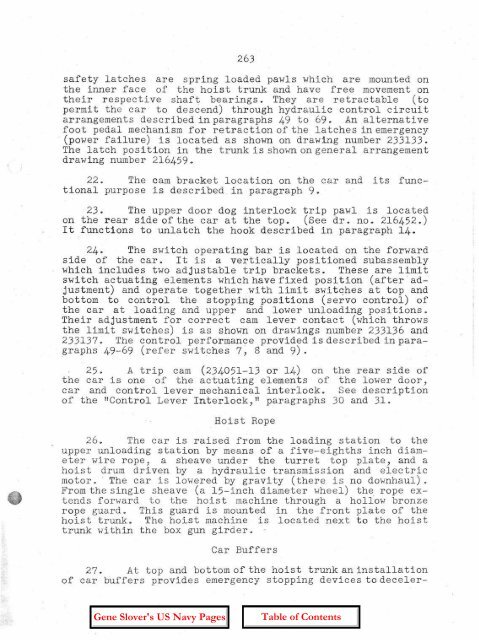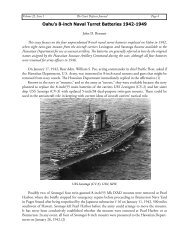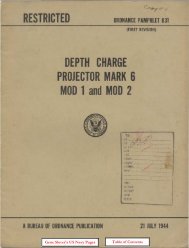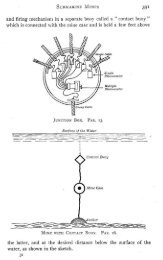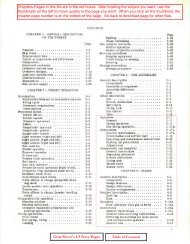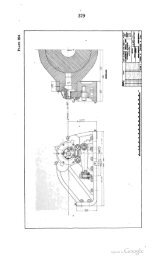OP-755 Part 2 Pages 197-401 - Personal Page of GENE SLOVER
OP-755 Part 2 Pages 197-401 - Personal Page of GENE SLOVER
OP-755 Part 2 Pages 197-401 - Personal Page of GENE SLOVER
You also want an ePaper? Increase the reach of your titles
YUMPU automatically turns print PDFs into web optimized ePapers that Google loves.
263<br />
safety latches are spring loaded pawls which are mounted on<br />
the inner face <strong>of</strong> the hoist trunk and have free movement on<br />
their respective shaft bearings. They are retractable (to<br />
permi t the car to descend) through hydraulic control circuit<br />
arrangements described in paragraphs 49 to 69. An al ternati ve<br />
foot pedal mechanism for retraction <strong>of</strong> the latches in emergency<br />
(power failure) is located as shown on drawing number 233133.<br />
The latch position in the trunk is shown on general arrangement<br />
drawing number 216459.<br />
22. The cam bracket location on the car and its functional<br />
purpose is described in paragraph 9.<br />
23. The upper door dog interlock trip pawl is located<br />
on the rear side <strong>of</strong> the car at the top. (See dr. no. 216452.)<br />
It functions to unlatch the hook described in paragraph 14.<br />
24. The switch operating bar is located on the forward<br />
side <strong>of</strong> the car. It is a vertically positioned subassembly<br />
which includes two adjustable trip brackets. These are limit<br />
switch actuating elements which have fixed position (after· adjustment)<br />
and operate together ~ith limit swit~hes at top and<br />
bottom to control the stopping positions (servo control) <strong>of</strong><br />
the car at loading and upper and lower unloading positions.<br />
Their adjustment for correct cam lever contact (which throws<br />
the limit switches) is as shown on drawings number 233136 and<br />
233137. The control performance provided is described in paragraphs<br />
49-69 (refer switches 7, 8 and 9).<br />
25. A trip cam (234051-13 or 14) on the rear side <strong>of</strong><br />
the car is one <strong>of</strong> the actuating elements <strong>of</strong> the lower door,<br />
car and control lever mechanical interlock. See description<br />
<strong>of</strong> the If Control Lever Interlock," paragraphs 30 and 31.<br />
Hoist Rope<br />
26. The car is raised from the loading station to the<br />
upper unloading station by means <strong>of</strong> a five-eighths inch diameter<br />
wire rope, a sheave under the turret top plate, and a<br />
hoist drum driven by a hydraulic transmission and electric<br />
motor. The car is lowered by gravity (there is no downhaul).<br />
From the single sheave (a 15-inch diameter wheel) the rope extends<br />
forward to the hoist machine through a hollow bronze<br />
rope guard. This guard is mounted in the front plate <strong>of</strong> the<br />
hoist trunk. The hoist machine is located next to the hoist<br />
trunk within the box gun girder.<br />
Car Buffers<br />
27. At top and bottom <strong>of</strong> the hoist trunk an installa tion<br />
<strong>of</strong> car buffers provides emergency stopping devices todeceler-


